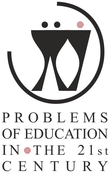THE UNIVERSITY AS AN AGENT OF KNOWLEDGE TRANSFER: THE CASE OF THE LATVIA UNIVERSITY OF AGRICULTURE
| Title | THE UNIVERSITY AS AN AGENT OF KNOWLEDGE TRANSFER: THE CASE OF THE LATVIA UNIVERSITY OF AGRICULTURE |
| Publication Type | Journal Article |
| Year of Publication | 2010 |
| Authors | Kronberga, G, Paula, L, Bite, D |
| Journal | Problems of Education in the 21st Century |
| Volume | 26 |
| Start Page | 79-89 |
| Date Published | November/2010 |
| Type of Article | Original article |
| ISSN | 1822-7864 |
| Other Numbers | ICID: 924620 |
| Keywords | cooperation models, knowledge transfer, the Latvia University of Agriculture |
| Abstract | There is a discussion within social science literature on theoretical models looking at the relationships between universities and stakeholders in the process of knowledge transfer particularly explaining whether universities are involved in the triple helix relationships (politicians, businesses representatives and university officials) or a quadruple helix system where public constitutes the forth party. Universities have a number of functions which among the other include both creation and obtaining of knowledge and transferring it within wider community, thus promoting socioeconomic development. By studying the case of the Latvia University of Agriculture (hereinafter – LUA), the authors of the paper focus on cooperation networks that are involved in the process of knowledge transfer from the university to regional stakeholders and vice versa. The research methodology is based on the qualitative approach. For identification of cooperation agents, nineteen individual and six group semi-structured interviews were held involving 35 informants. For a deeper analysis of relationships between the LUA and regional stakeholders, policy documents concerning socioeconomic development of Zemgale planning region were analysed. |
| URL | https://journals.indexcopernicus.com/search/article?articleId=2594304 |
| Refereed Designation | Refereed |
| Full Text |
